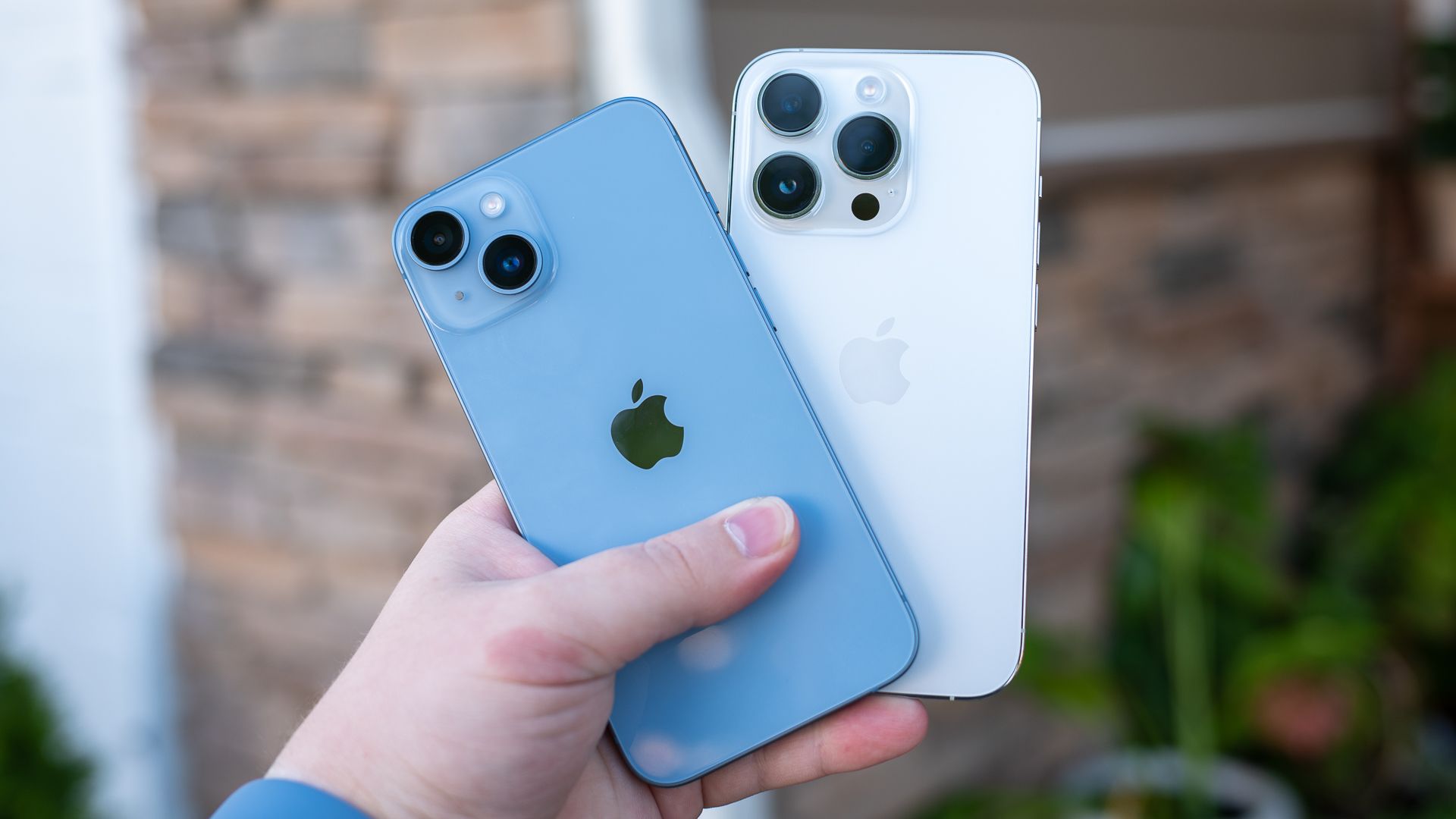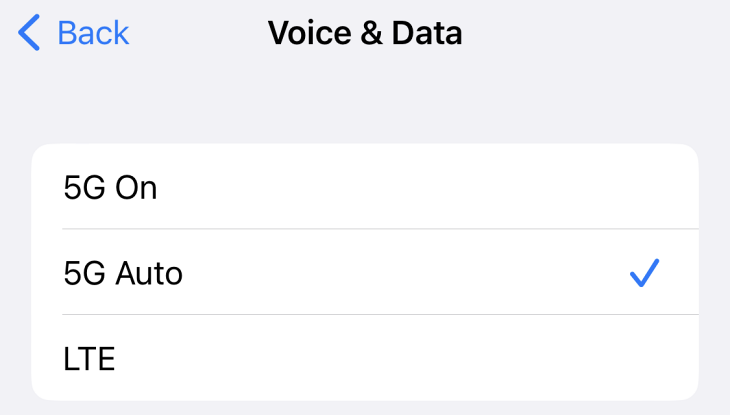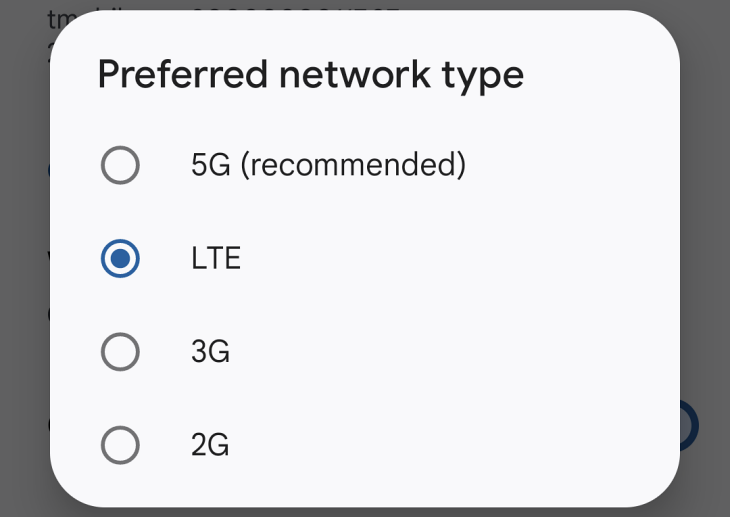Key Takeaways
To check 5G support on your iPhone, navigate to Settings > Mobile Data > Mobile Data Options > Voice & Data. If you see 5G as one of the options, then your phone is 5G. Similarly, Android users can navigate to Settings > Network & Internet > SIMs > Preferred Network Type to find out about 5G support.
With 5G frequently being portrayed as a game-changer in cellular technology, you may wonder: is my phone 5G? You can find out in a few simple steps.
What Is 5G?
5G, a successor to 4G, is a moniker used to describe the fifth-generation cellular network technologies used by carriers worldwide. It comes with a promise of faster data speeds, greater bandwidth, and reduced latency than previous-generation cell networks. So if you use 5G on your phone, you can download content faster, stream high-definition movies and TVs without buffering, play online video games without connectivity issues, and do much more.
But like any new major technology, it needs new hardware. Carriers are upgrading hardware on their end to deliver 5G networks, and as a consumer, you need a 5G-compatible phone to enjoy its benefits. Any 5G compatible phone has specialized hardware, such as newer cellular modems that can connect to the 5G networks. So how do you check if you have a 5G phone?
How Do I Know if My Phone Is 5G?
As of March 2023, pretty much all new high-end and mid-range phones being launched can use a 5G network. And the same is true for quite a few budget phones as well. But if you are unsure whether your phone is 5G, it's pretty easy to check.
But remember, apart from having 5G hardware, a phone must be certified to work on a carrier's 5G network. So if your 5G phone didn't come certified to work on your carrier, it would need that certification, which often accompanies a software update to enable carrier support. Otherwise, you won't be able to use 5G on your operator.
Is My iPhone 5G Compatible?
Apple has included 5G hardware in every iPhone shipped since iPhone 12 series, including the iPhone SE (3rd gen). So if you own iPhone 12 series or newer, your phone is 5G-compatible. Apple's relatively simple iPhone lineup makes knowing if your iPhone is 5G compatible easy. But as mentioned earlier, it's not as simple as having 5G hardware in the phone; you also need the necessary software to support your carrier.
To check if your iPhone can work with your carrier's 5G networks, open the "Settings" app and then navigate to Mobile Data > Mobile Data Options > Voice & Data. If you see "5G Auto" or "5G On" options listed, your iPhone can work with your carrier's 5G networks. But if only LTE or 3G options are listed, your iPhone won't work with your mobile operator's 5G network.
In case you own an iPhone 12 series or newer iPhone, but there is no 5G on the "Voice & Data" page for your carrier, you'll have to wait for Apple to update iOS to include the necessary support for your cell carrier.
Is My Android Phone 4G or 5G?
The process of checking 5G compatibility on an Android phone is similar to iPhone, but given the diverse nature of Android handsets, the options and their location in the phone software can differ depending on your device manufacturer.
So if you own an Android phone, you can confirm whether your phone is 4G or 5G by opening the "Settings" app and navigating to Network & internet > SIMs > Preferred Network Type. If you find 5G listed as one of the options, then your phone supports 5G. Otherwise, see if you have 4G or LTE listed; their presence will indicate support for 4G.
However, if you don't see 5G option on your phone even though it's marketed as a 5G phone by the manufacturer, it's not currently certified to support 5G on your carrier. You will have to wait for the phone manufacturer to release a software update adding the necessary support, or it's possible your phone supports some 5G bands, but not the ones used by your mobile operator.
Another way to confirm 5G support on your Android phone is to check its specifications on the manufacturer's website. But this will only tell you whether your phone has 5G hardware or not. For carrier-specific compatibility, the previously-mentioned method is the best way.
Do I Have 5G in My Area?
5G compatibility is only one part of the equation when it comes to enjoying 5G data speeds and other benefits. You will also need 5G network coverage at your location. As of 2023, 5G networks are still being deployed in the US, so not every city or town has extensive 5G coverage. But carriers are gradually rolling out 5G networks, so the places that don't have 5G coverage right now may get it in the coming months or years.
If you want to check if your carrier offers 5G in your area, the best way is to contact them directly. You can call their customer care or ask a representative at their store. Alternatively, you can check the network coverage maps available on their websites. All three major carriers in the US---AT&T, T-Mobile, and Verizon---allow you to check their 5G and 4G coverage on their website. You can even search your address or zip code for coverage information.



